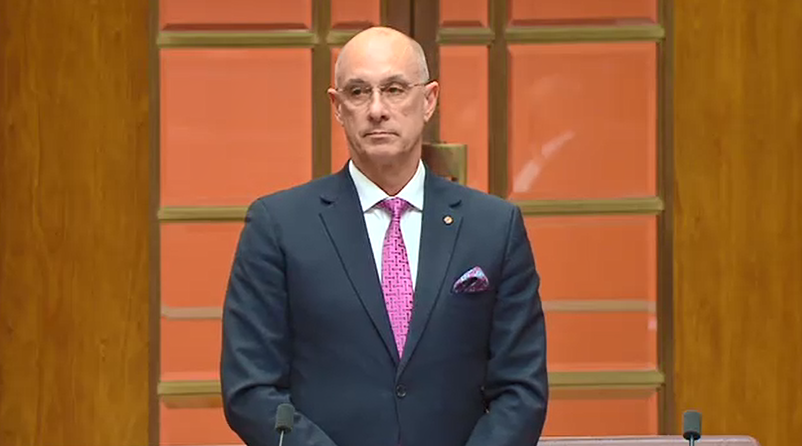Take Note: Power Generation
I am indeed, Deputy President. I rise to take note of the answer to the question to Minister Watt about power generation, something which I know something about. Like some on the other side, I spent the best part of my career working in and around the energy industry, so I know something about it. I would also like to take note of Minister Wong's earlier slur against me when she was comparing me with Senator Rennick. She was in the chamber when I was giving my two-minute speech about my visit to COP 27, and how important I thought it was for coalition senators to be there. I didn't see my very good friend Senator Rennick there. I know Senator Cox was there, but I also didn't see her there.
In this place only a matter of weeks ago when we were debating the legislating of the 43 per cent target I said in my speech, and maybe those opposite can show this Hansard to Senator Wong:
Personally, I am more ambitious than those opposite as to what I would like to see our emissions reduction target be. However, I am not blind to reality, unlike those opposite. I believe we need to be as pragmatic as we are ambitious.
Why am I saying that? JP Morgan's Annual Energy Paper explicitly stated:
Countries that reduce production of fossil fuels, under the assumption that renewables can quickly replace them, face substantial economic and geopolitical risks.
If the energy transition is to succeed, we cannot disconnect the generation methods we currently have before we have a replacement for them.
That's what those opposite have not yet addressed. They've talked about their plan, which was put together by RepuTex, I think it was. When I last worked with them, while I was consulting, they were a polling firm. I'm sure they've learned a lot about energy policy since then, but I'm not sure how those opposite see that as a viable energy plan.
Anyone who starts talking about renewables without talking about firming doesn't know what they're talking about when it comes to energy supply, sovereign energy security and bringing down emissions. The two just aren't the same. None of this can work in isolation. You can't just string wires to some place out in Woop Woop where someone's decided to build a solar farm or a wind farm and think that that's going to give you a good return on your money or not push up power bills. I guarantee you, it will. The $23 billion or $24 billion that was in the budget? Add a zero to that, would be my best estimate. I'm sure I can find ways to cite and prove that.
Batteries are not going to be the answer to firming. They're just not. No-one at COP was talking about batteries being a grid-scale firming source. They may be in the future. Hopefully technology will allow them to be. Hopefully China might still sell them to us at some point. Hopefully Australia could even be a manufacturer of our own since we produce a lot of the minerals that are critical for batteries. But at the moment, and in the foreseeable future—out to 2030—they are not going to be grid-scale.
JP Morgan's annual energy paper stated that putting more renewable energy on the grid will not guarantee lower prices, because energy prices rest on an average cost of generation, not just the actual cost of power. No, it's not just the photons or the knots of wind. It's how it is delivered on a continuous, supported basis. That's the bit that we're not hearing from the other side.
As AEMO's 2022 ISP states, we need to treble the firming capacity from dispatchable storage, including pumped hydro and gas-fired generation to firm renewables that are coming onto the grid.
I do my homework and I've seen and I've found that there are actually some Australian companies that deserve to be backed and that are producing firming sources that might actually provide grid-scale firming. There are also Australian companies delivering printed solar that we can put at the source of use, not where we want to run some wires to.

